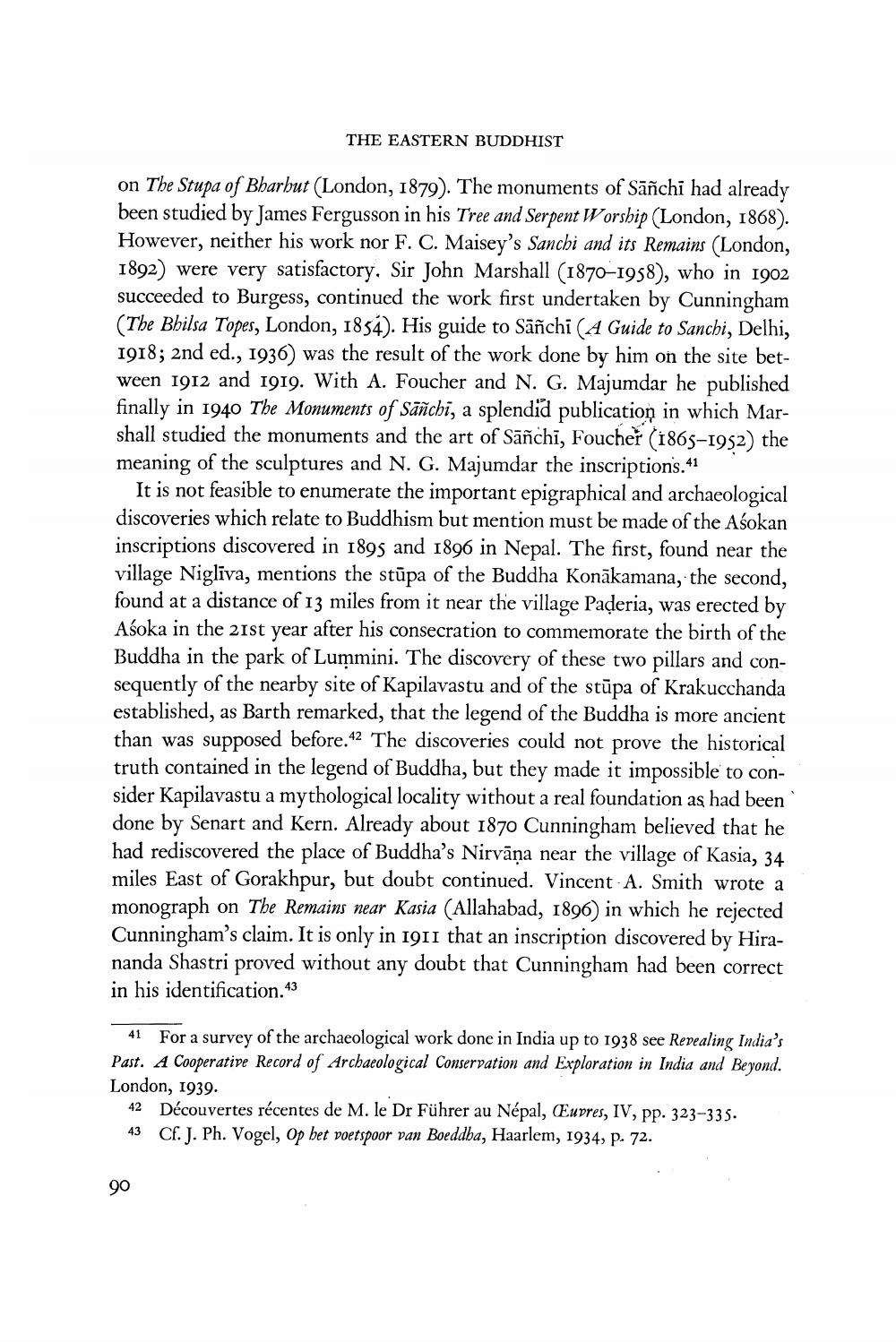________________
THE EASTERN BUDDHIST
on The Stupa of Bharhut (London, 1879). The monuments of Sāñchi had already been studied by James Fergusson in his Tree and Serpent Worship (London, 1868). However, neither his work nor F. C. Maisey's Sanchi and its Remains (London, 1892) were very satisfactory, Sir John Marshall (1870–1958), who in 1902 succeeded to Burgess, continued the work first undertaken by Cunningham (The Bhilsa Topes, London, 1854). His guide to Sāñchi (A Guide to Sanchi, Delhi, 1918; 2nd ed., 1936) was the result of the work done by him on the site between 1912 and 1919. With A. Foucher and N. G. Majumdar he published finally in 1940 The Monuments of Sāñchi, a splendid publication in which Marshall studied the monuments and the art of Sāñchi, Foucher (1865-1952) the meaning of the sculptures and N. G. Majumdar the inscriptions. 41
It is not feasible to enumerate the important epigraphical and archaeological discoveries which relate to Buddhism but mention must be made of the Asokan inscriptions discovered in 1895 and 1896 in Nepal. The first, found near the village Nigliva, mentions the stūpa of the Buddha Konākamana, the second, found at a distance of 13 miles from it near the village Paderia, was erected by Asoka in the 21st year after his consecration to commemorate the birth of the Buddha in the park of Lummini. The discovery of these two pillars and consequently of the nearby site of Kapilavastu and of the stūpa of Krakucchanda established, as Barth remarked, that the legend of the Buddha is more ancient than was supposed before. 42 The discoveries could not prove the historical truth contained in the legend of Buddha, but they made it impossible to consider Kapilavastu a mythological locality without a real foundation as had been done by Senart and Kern. Already about 1870 Cunningham believed that he had rediscovered the place of Buddha's Nirvāņa near the village of Kasia, 34 miles East of Gorakhpur, but doubt continued. Vincent - A. Smith wrote a monograph on The Remains near Kasia (Allahabad, 1896) in which he rejected Cunningham's claim. It is only in 1911 that an inscription discovered by Hirananda Shastri proved without any doubt that Cunningham had been correct in his identification.43
41 For a survey of the archaeological work done in India up to 1938 see Revealing India's Past. A Cooperative Record of Archaeological Conservation and Exploration in India and Beyond. London, 1939.
42 Découvertes récentes de M. le Dr Führer au Népal, (Euvres, IV, pp. 323-335. 43 Cf. J. Ph. Vogel, op het voetspoor van Boeddha, Haarlem, 1934, p. 72.
90




